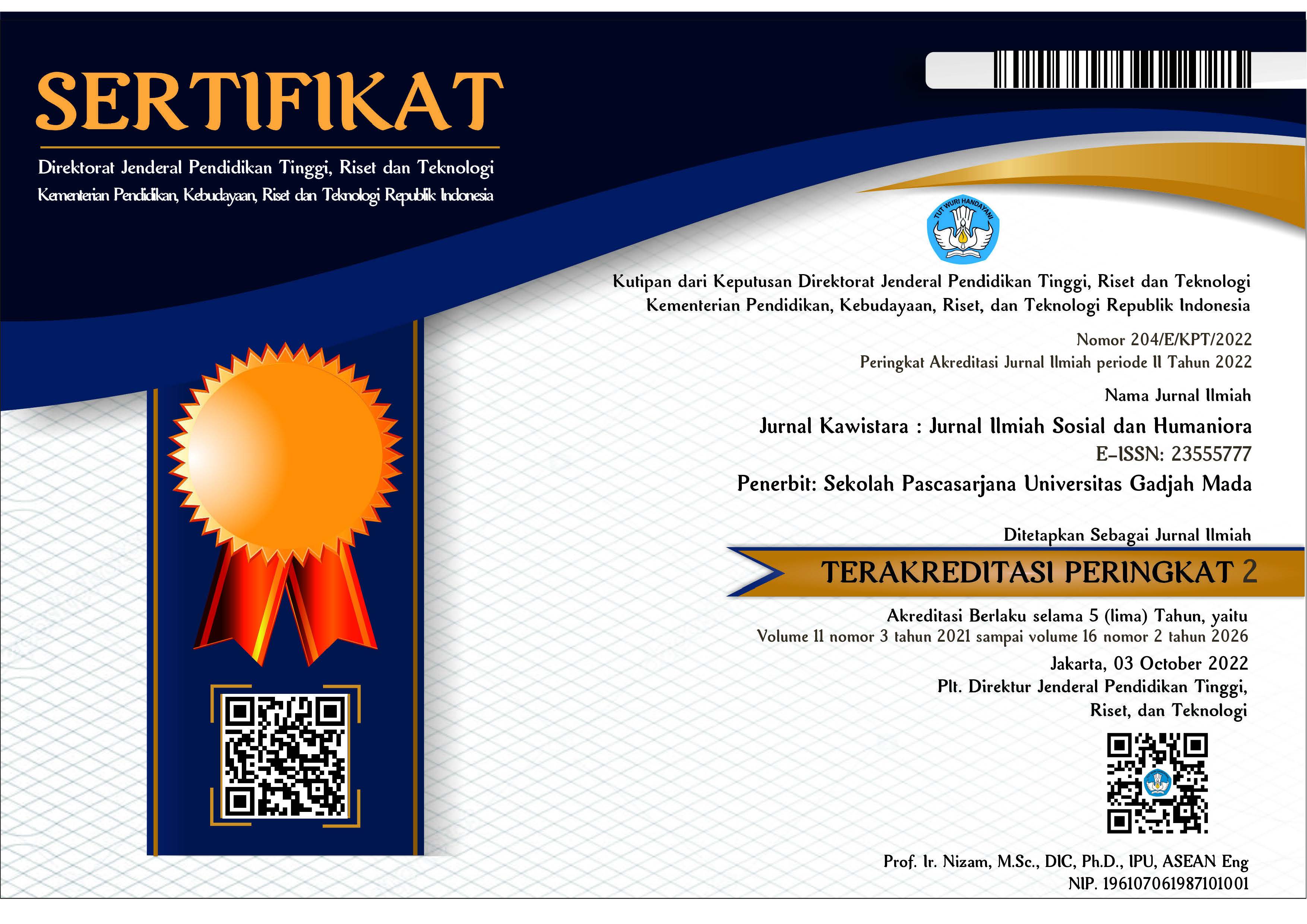TRADITIONAL SILVICULTURE AND ITS OPPORTUNITY IN PRIVATELY OWNED FOREST MENOREH MOUNTAIN-KULONPROGO
Priyono Suryanto(1*)
(1) Faculty of Forestry Universitas Gadjah Mada
(*) Corresponding Author
Abstract
Agroforestry systems (AFS) are emerged to adapt with farmers needs, balancing economic and
ecological conditions. In recent years, however, there has been shifting from ecology to economy, where
traditional silviculture emphasizes toward more monoculture with high inputs. This condition will
result in decreasing ecological function of AFS as one of the epitomes of sustainable. This research aims
to know the role of traditional silviculture techniques practiced by farmers and to develop knowledge
in AFS management as the basis to compose more productive and sustainable management. The
study was conducted in Menoreh mountains, Yogyakarta. There zones based on altitude differences
were distinguished, namely lowlands (<300 meter above sea level, masl), medium (300-600 masl) and
high (> 600 masl). Data collecting was done by conducting deep interviews from 46 respondents, who
were chosen randomly in each zone. The data included local knowledge practices, space dynamic and
management, traditional silviculture, and orientation of AFS management. The analysis itself was done
descriptively which was integrated through diagnosis approach and design in agroforestry systems.
There are there models of AFS management based on there strata of space utilization both in homegarden
and dry field, namely initial, intermediate and advanced agroforestry. In the lowland zone is initial
agroforestry practicw, characterized by food production orientation. In the middle and upper zone are
intermediate and advanced Based on this findings, aproductive and sustainable adaptive silviculture
(AS) scheme for AFS management (AS AFS) is required, AS AFS_1 is oriented to keep agroforety
being able to continualy produce food and its derivatis throughout the management. Intensive space
arrangements and resources sharing silvicuculture measures are important instruments in this model.
The second model, AS AFS_2 is for productive intermediate and advanced agroforestry with multilayer
productions. It is suggested in this model to do intensive enrichment planting using tolerant species and
compatible management approach of inter unit lands owned by farmers.
ecological conditions. In recent years, however, there has been shifting from ecology to economy, where
traditional silviculture emphasizes toward more monoculture with high inputs. This condition will
result in decreasing ecological function of AFS as one of the epitomes of sustainable. This research aims
to know the role of traditional silviculture techniques practiced by farmers and to develop knowledge
in AFS management as the basis to compose more productive and sustainable management. The
study was conducted in Menoreh mountains, Yogyakarta. There zones based on altitude differences
were distinguished, namely lowlands (<300 meter above sea level, masl), medium (300-600 masl) and
high (> 600 masl). Data collecting was done by conducting deep interviews from 46 respondents, who
were chosen randomly in each zone. The data included local knowledge practices, space dynamic and
management, traditional silviculture, and orientation of AFS management. The analysis itself was done
descriptively which was integrated through diagnosis approach and design in agroforestry systems.
There are there models of AFS management based on there strata of space utilization both in homegarden
and dry field, namely initial, intermediate and advanced agroforestry. In the lowland zone is initial
agroforestry practicw, characterized by food production orientation. In the middle and upper zone are
intermediate and advanced Based on this findings, aproductive and sustainable adaptive silviculture
(AS) scheme for AFS management (AS AFS) is required, AS AFS_1 is oriented to keep agroforety
being able to continualy produce food and its derivatis throughout the management. Intensive space
arrangements and resources sharing silvicuculture measures are important instruments in this model.
The second model, AS AFS_2 is for productive intermediate and advanced agroforestry with multilayer
productions. It is suggested in this model to do intensive enrichment planting using tolerant species and
compatible management approach of inter unit lands owned by farmers.
Keywords
Agroforestry, Silviculture, Adaptif, Menoreh Mountains
Full Text:
PDFArticle Metrics
Refbacks
- There are currently no refbacks.
Copyright (c)
Jurnal Kawistara is published by the Graduate School, Universitas Gadjah Mada.







